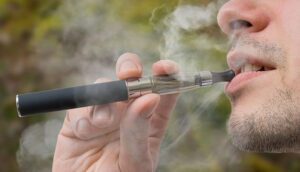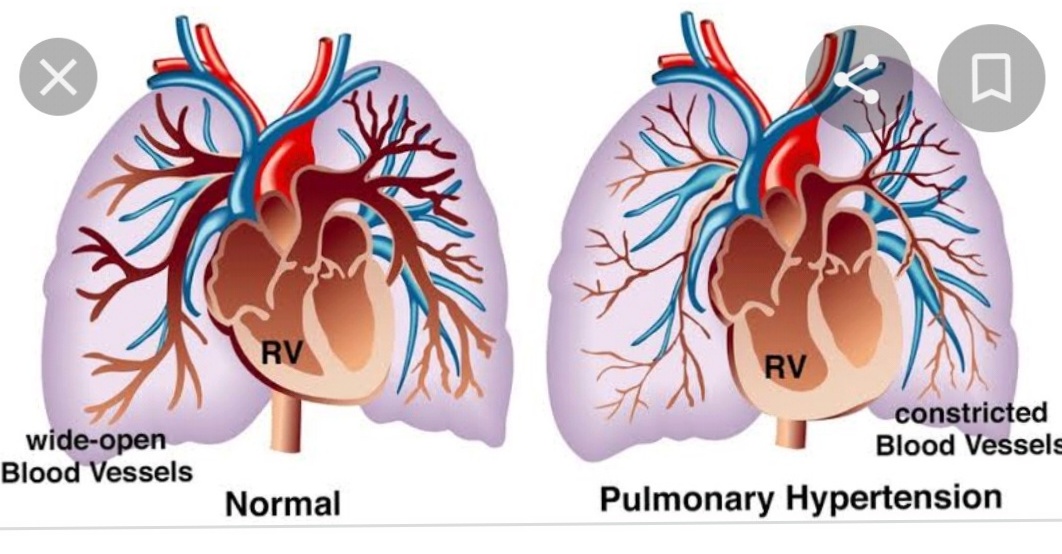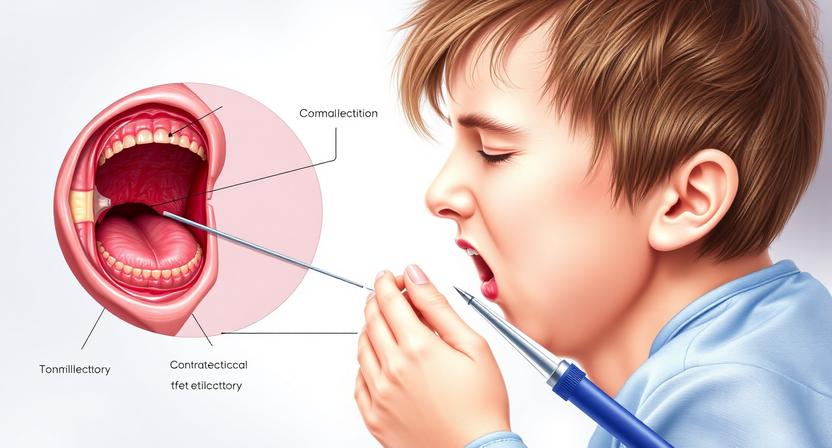“Is Vaping Causing Lung Cancer? What the Latest Research Really Says”
Although there is currently no conclusive proof that vaping directly induces lung cancer, it is not thought to be harmless. Chemicals are introduced into the lungs through vaping, and although e-cigarettes haven’t been used for enough time to assess long-term cancer consequences, some research suggests a possible cancer risk.


Here is a closer inspection:
No Direct Connection Established:
Although studies haven’t conclusively connected vaping to lung cancer in humans, data indicates that e-cigarette smoke may contain substances that can cause cancer.
Chemicals that could cause cancer:
Nicotine, heavy metals, and other potentially dangerous substances—some of which are known carcinogens—are present in e-cigarettes.
Tumor Development and DNA Injury:
According to some studies, e-cigarette use can result in DNA damage and other cellular alterations that may raise the risk of cancer.
Lung Injury and EVALI:
A dangerous lung ailment called EVALI (E-cigarette or Vaping product use-Associated Lung Injury), which can result in significant lung damage and even death, can be brought on by vaping.
Concerns About Dual Use:
A study released by the National Institutes of Health (NIH) found that using cigarettes with vaping raises the chance of developing lung cancer much more than smoking alone.
Long-term Consequences Not Known:
The long-term health consequences of vaping, such as its possible effects on cancer risk, are still unknown to scientists.
E-cigarettes are not risk-free:
Although they are frequently promoted as a safer alternative to smoking, they are not risk-free, and their long-term consequences are still being researched.
In summary, even though there is currently no conclusive evidence linking vaping and lung cancer, the presence of possible carcinogens, evidence of DNA damage, and the possibility of EVALI and other lung illnesses indicate that vaping is not a safe substitute for smoking and may increase the risk of developing lung cancer.
When You Vape


The process of smoking and vaping involves heating a substance and inhaling the vapors that are produced. With traditional cigarettes, you breathe in smoke produced by burning tobacco. In vaping, a device—usually a vape pen or a mod, which is an improved vape pen that might resemble a flash drive—heats a liquid (known as vape juice or e-liquid) until it becomes a vapor that you inhale.
“Vaping is a delivery mechanism comparable to a nebulizer, which people with asthma or other respiratory illnesses may be acquainted with,” Broderick explains. “A nebulizer converts liquid medication into a mist that patients inhale. This is a very efficient method of administering medication to the lungs.”
The chemicals you breathe in when vaping
Vaping, unlike a nebulizer, covers lung tissue with potentially hazardous compounds rather than a therapeutic mist. The components of an e-liquid mixture typically consist of nicotine or THC (the chemical in marijuana that causes psychological effects), flavorings, and aromatic additives dissolved in an oily liquid base. “We think that some of the vaporized elements of the oil are getting deep down into the lungs and causing an inflammatory response,” says Broderick.
Vitamin E is the focus of the inquiry. It is frequently utilized in e-liquid as a thickening and delivery ingredient. Additionally, it is likely an irritant when inhaled, even though it is harmless when consumed or applied to the skin. Individuals with severe, vaping-related damage have been found to have it in their lungs.
Additionally, the lungs may be at risk from other prevalent ingredients in e-liquids or those that are created upon heating. Among them are:
Diacetyl: This food additive, which enhances the flavors of e-cigarettes, is known to harm the tiny airways in the lungs.
Formaldehyde: This harmful substance may cause lung illness and exacerbate heart disease.
Acrolein: This compound, which is most frequently used as a weed killer, can also harm lungs.
The Potential Impact of Vaping on Your Lungs
As e-cigarette usage persists, experts will eventually have a greater grasp of how vaping impacts the lungs. We do know at this moment that vaping is linked to a number of lung illnesses:
Popcorn lung and vaping


“Popcorn lung” is a different name for bronchiolitis obliterans (BO), an uncommon disorder brought on by harm to the lungs’ tiny airways. The first sign of BO was when people working in popcorn factories began to become ill. Diacetyl, a food ingredient used to replicate the taste of butter in microwave popcorn, was the perpetrator.
Diacetyl is a common ingredient in flavored e-liquids that improves the flavor. Inhaling diacetyl causes inflammation and can result in popcorn lung, a condition that makes breathing challenging and causes persistent scarring in the airways’ tiniest branches. There is no long-term cure for popcorn lung. Nevertheless, there are therapies that can alleviate the symptoms of BO, such as the following:
- a cough
- wheezing
- Pain in the chest
- breathlessness
Lipoid pneumonia caused by vaping
Lipoid pneumonia, unlike the typical pneumonia caused by infection, occurs when fatty acids, the building blocks of fat, enter the lungs. Lipoid pneumonia brought on by vaping occurs when oily components of e-liquid are inhaled, triggering an inflammatory reaction in the lungs. Lipoid pneumonia symptoms include:
- Persistent cough
- breathlessness
- spitting up blood or sputum with blood traces
“The single most important thing you can do is identify what is causing it—in this case vaping—and eliminate it, since there is no effective treatment for lipoid pneumonia other than supportive care as the lungs heal on their own,” Broderick said.
A collapsed lung, sometimes referred to as primary spontaneous pneumothorax, can occur after vaping.
A collapsed lung, also known as a primary spontaneous pneumothorax, happens when oxygen leaks through a hole in the lung. A wound from a gunshot or a knife, as well as the bursting of air bubbles on the surface of the lungs and the formation of minute tears, may cause this.
According to Broderick, these blisters typically occur in tall, thin individuals who experienced a growth spurt throughout adolescence. Due to the rapid growth, a weak spot may form and blister at the top of the lungs. These blisters don’t usually cause symptoms on their own. Unless they break, you won’t be aware of them. Smoking and vaping have been linked to an elevated risk of these blisters bursting, which can result in lung collapse.
“We’re seeing a rash of collapsed lungs in younger people at Johns Hopkins,” Broderick claims. “We always ask if they’ve been smoking, and they’ll frequently answer, ‘No, I don’t smoke. But I do vape.'” We now advise patients to refrain from smoking or vaping in order to prevent future lung collapse and surgery.”
Indications of a lung collapse include:
- Severe discomfort in the chest or shoulder
- breathing problems
- having trouble breathing
A collapsed lung may recover with only rest and oxygen therapy. However, more severe cases necessitate surgery to fix the hole in the lung or a chest tube to remove oxygen that has escaped from the body cavity.
Is it possible to get lung cancer from vaping?


Given that vaping introduces a variety of compounds into the lungs, cancer is undoubtedly a worry. However, since vaping products have not been available for a long enough period of time, we are unable to ascertain if they are carcinogenic.
“We do know that smoking tobacco causes tiny particles to be deposited deep into the bronchial tree and can cause cancer. It’s possible that vaping has the same effect,” says Broderick.
The Risks of Secondhand Vapor Are Also Not Mitigated
It’s a misconception that e-cigarette secondhand emissions are harmless. Despite popular belief, secondhand vapor is not merely water. There may be a variety of harmful components in the vapor that is released when someone exhales, including:
- Nicotine
- Extremely small particles
- Diacetyl
- a chemical called benzene that is found in vehicle exhaust
Even if secondhand vapor may not have the same impact on the lungs as vaping, it is still preferable to stay away from it if at all feasible.
If Your Lungs Are Sore, What Should You Do?
Don’t dismiss chest or lung discomfort as typical if you smoke or vape. It’s important to see a doctor if you experience pain or other signs related to breathing difficulties, like shortness of breath or a persistent cough.






